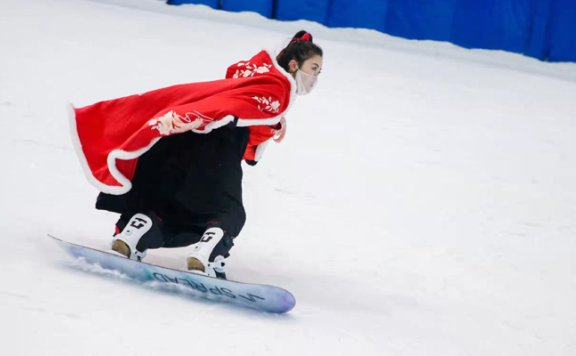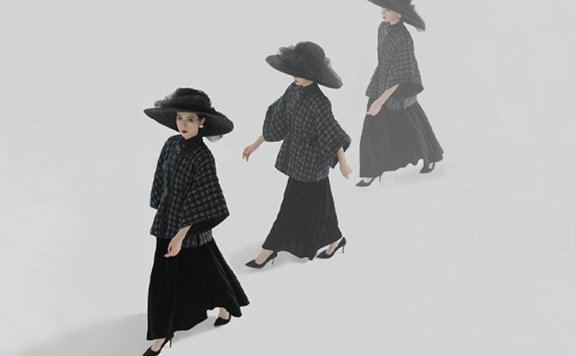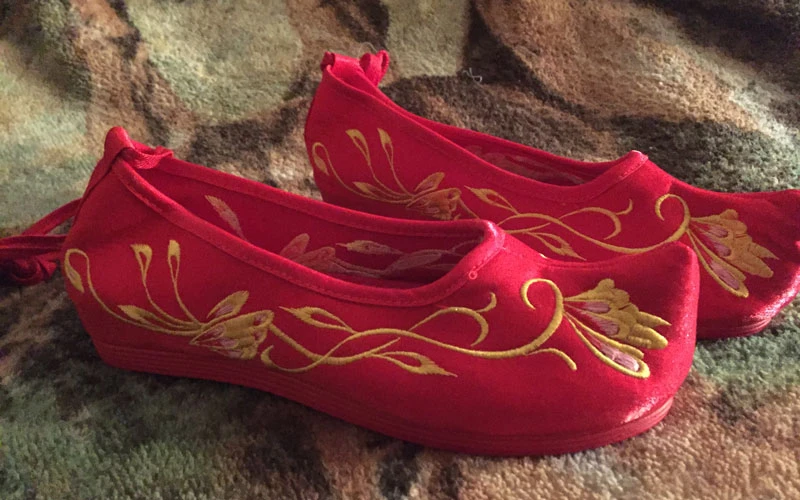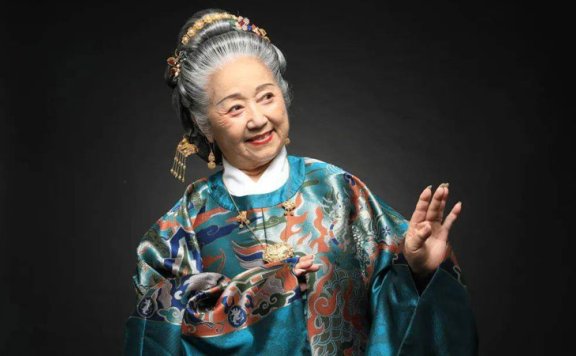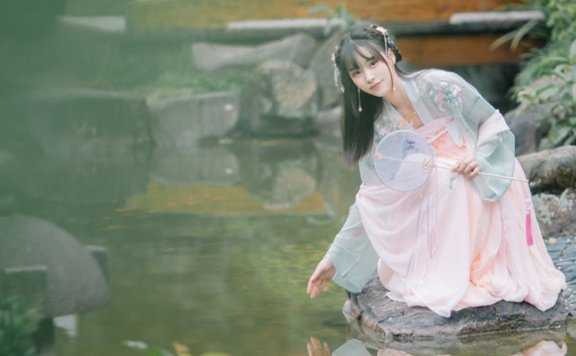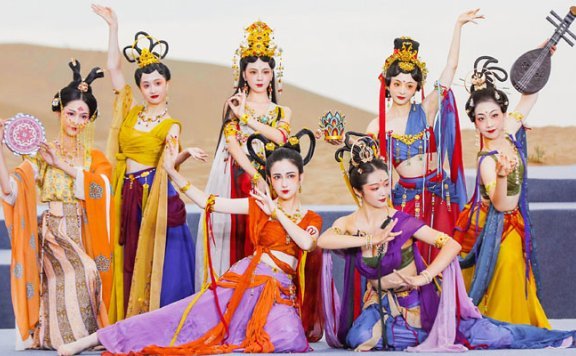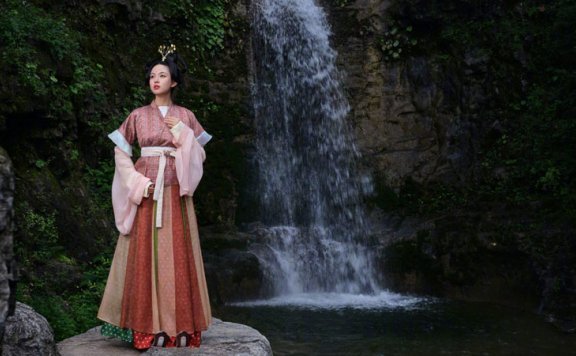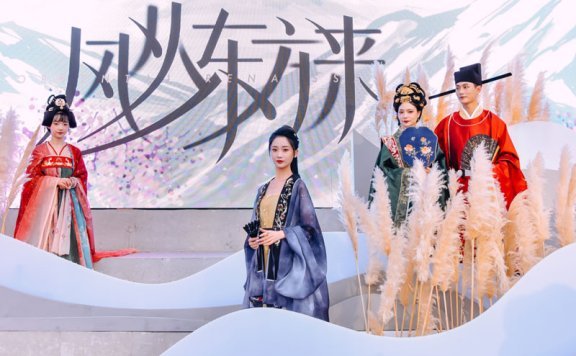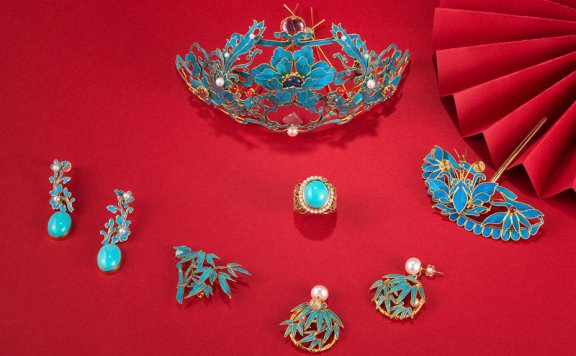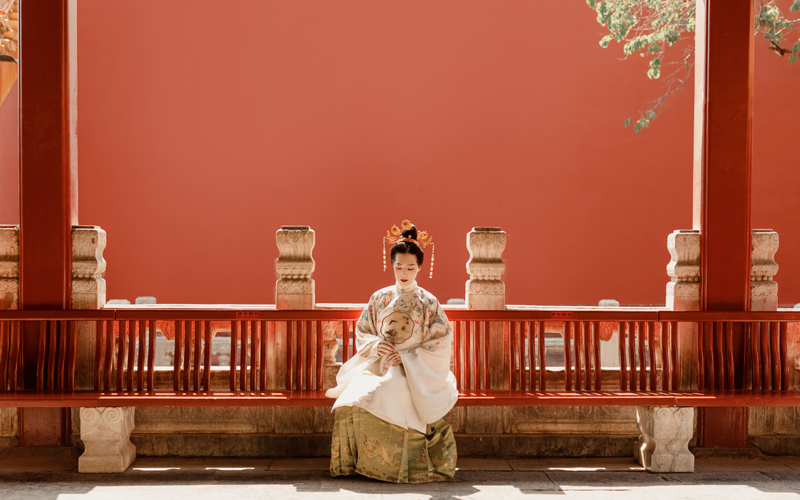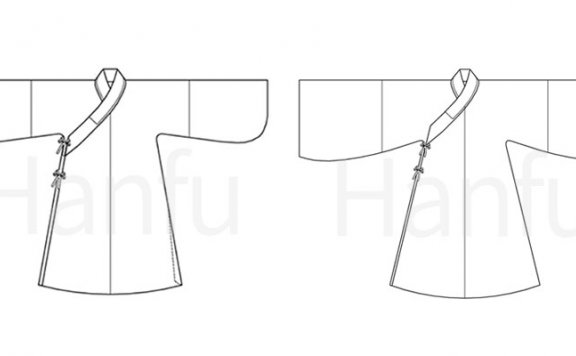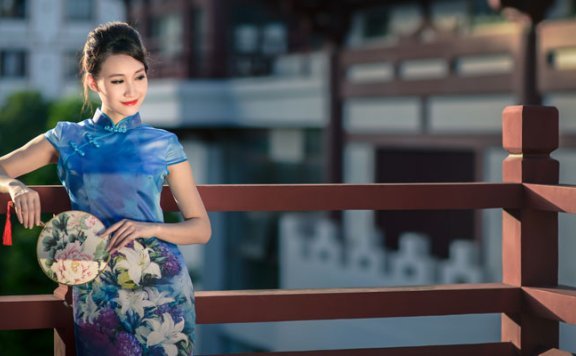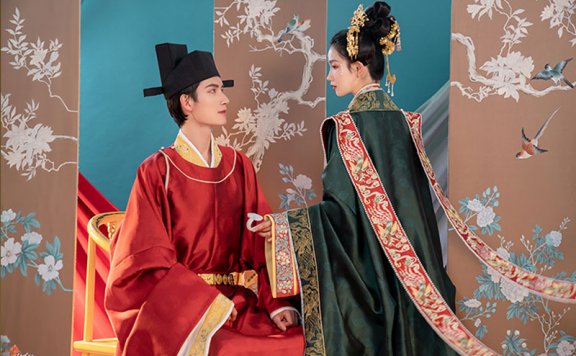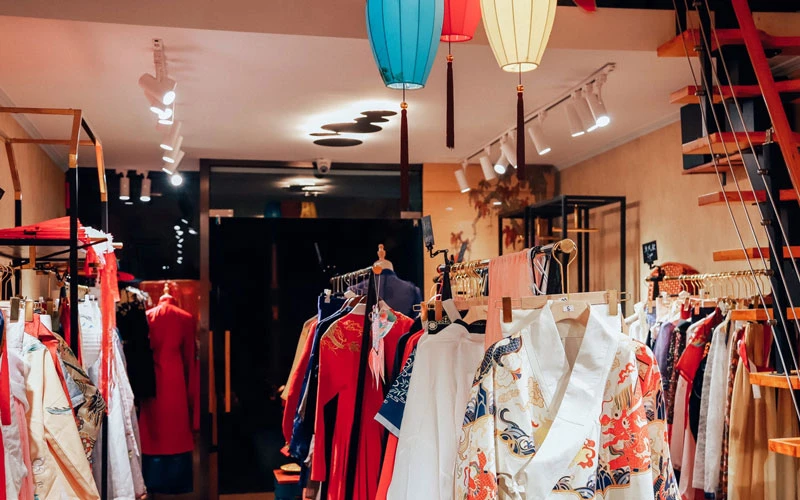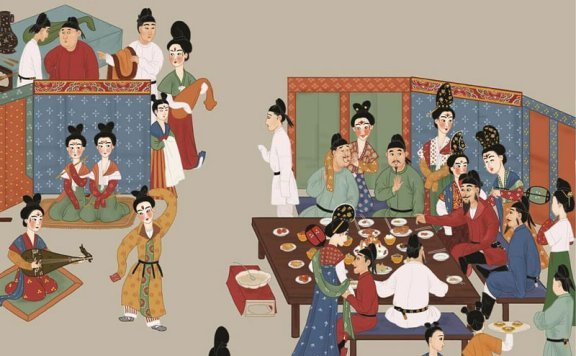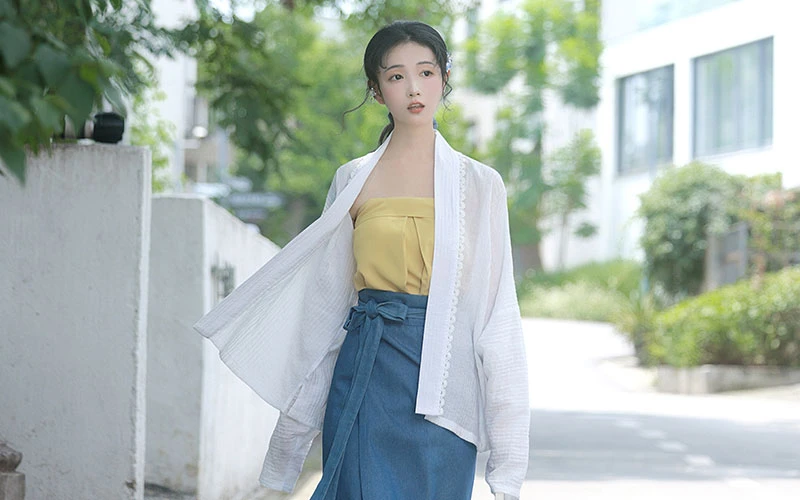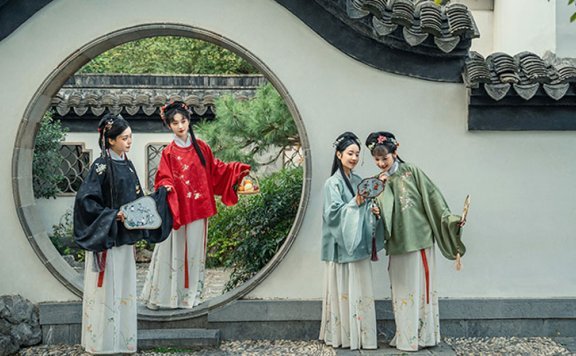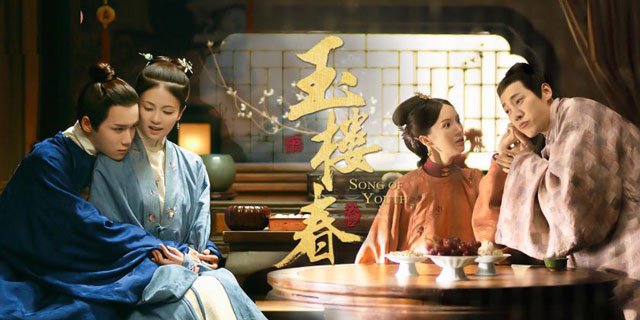Article
搜索结果:
-
Unlocking the Hanfu Ski Look - How This Hanfu Girl Did It
Recently, a hanfu enthusiast draped in a red Doupeng (hanfu cloak) hanfu ski look shot a video in a ski resort has received a lot of attention from netizens. Beijing Winter Olympic Games into the countdown, recently, a girl in hanfu galloping snowfield, valiant posture attracted the netizens exclaimed: "like the flight on a sword!" "What magic Chinese kung fu!". This cool girl is called "Xiao Mei", post-90s, senior skiing enthusiast, but also an outdoor sports blogger. The other day, "Xiao Mei" attended an event at an indoor ski resort in Chengdu and was filmed skiing in hanfu. In the video, "Xiao Mei" valiantly completed a series of snowboarding movements, red Doupeng in the white snow on the wind. She said, "The sport of skiing is still relatively niche in China, I hope more people can understand and love it, and I chose hanfu because I want more foreign friends who are focused on the Beijing Winter Olympics to understand the beauty of Chinese costume, and also my own way to promote the Beijing Winter Olympics." For the unexpected popularity of the video, "Xiao Mei" was a little surprised while happy, "I was at an event in Chengdu that day, and I… -
3 Essential Winter Hanfu Layering Tips in 2021
In autumn and winter, this time of year, how to wear warm but not bloated? Layering, of course! With good layering, hanfu items can be used across seasons, and the temperature difference between day and night can be given more freedom to combine. So not only can fashion be used for layering, but hanfu is also very suitable for layering. Following the Han Time winter hanfu layering tips to create your own winter hanfu style. Tip 1: Comfortable The first is comfort, many hanfu have relatively wide sleeves or too tight, not suitable for layering inside. If you feel tight and unfit when you wear it yourself, it's definitely not comfortable. These are the small details that are easy to catch when layering. So in order to emphasize the comfort, inside the clothes as loose as possible, and looseness from the outside to inside is a gradual process of becoming smaller. Tip 2: Good-looking A big part of looking good lies in the material matching. Generally speaking, we are used to tweed, knitted material in the autumn and winter seasons as the first choice for purchase, these clothes of similar thickness will cause a bloated feeling if layering. Relatively… -
Hanfu Diary: Ongoing Journey
LiangYuZuan's personal account with hanfu, a short blog. -
Hanfu Making(10) - Panling Pao and Lanshan Cutting & Sewing Patterns
This section contains Panling Robe (盘领袍), Lanshan (襕衫). Size range: 165/88A to 185/104A. Please read the introduction of the topic and how to use this guide in advance. Introduction In the Sui and Tang dynasties, the basic features of the Yuanling Shan (圆领衫, round neck shirt) were narrow sleeves, a slightly shorter length, and a straight strip of cloth standing on top of the collar. Later, the collar of the round neck shirt began to gradually become wider and lower, to the Song dynasty, has completely become the collar edge of the pan collar spreading, while the cuffs become larger, the body of the garment becomes longer. Ming-style Panling Pao (pan collar robe) added hem on the basis of Song style, its collar production process is generally straight cloth strip folded, and then ironed into shape, along the inner circle with line sewing tight, so that the collar edge curved to fit the round neckline, collar edge end nailed with buttons for fixed. The Panling Robe was widely used as imperial costumes and official uniforms in the Ming Dynasty, with the basic features of a pan collar, Pipa sleeves or wide sleeves, and hem on both sides of the garment.… -
77-Year-Old Grandma in Hanfu Became Popular on the Internet
Recently, Hangzhou, Zhejiang Province, the 17th China International Cartoon & Animation Festival, a grandma dressed in a Chinese hanfu costume made a stunning appearance. It attracts many eyes. The "Hanfu grandma" named Liu Weixiu (刘维秀), has 77 years old. At first, the grandma just cooperated with her students to shoot a set of videos in hanfu, but to her surprise, the video was released and received many likes from netizens. The grandma created a social account to record her life, and with her outstanding hanfu look, she gained many fans! "Beauty lasts forever.", in the social media comments of the Hanfu grandma, you can often see such a message from netizens. In fact, this is very closely related to the grandma's youth is a Beijing opera actress, she began to study Beijing opera at the age of 13, 19 years old into the National Academy of Chinese Theatre Arts to further study, decades of Beijing opera skills make the grandma's gestures, gesticulates, and moves with the classical grace. After Grandma retired, the costumes were put into the depths of her closet, but the hanfu not only gave her back the feeling of performing on stage, but also gave her a… -
How to Clean and Store Hanfu?
Hanfu looks fairy-like and has a unique feeling when worn, so there are so many styles of hanfu and different materials, so do you know how to maintain the hanfu? For the maintenance of hanfu, there are two main parts, one is the cleaning of hanfu and the other is the storage of hanfu. First of all, let's talk about the cleaning of hanfu. Hanfu is not quite the same as ordinary clothes, because it is a complete set, and the skirt and sleeves are long and wide, which is not very easy for cleaning. There is also a need to decide how to clean the hanfu according to its different materials, and there are generally the following ways. The correct way to clean a hanfu should be to turn it over and wash it by hand as much as possible. If you choose to use a washing machine, use a laundry bag to reduce the wear and tear on the hanfu. The next thing to note is that hanfu of different shades of color should not be washed together at the same time, as this will cause cross staining, and it is best to wash dark hanfu and light… -
Dunhuang Style Costume Show in the Desert Grand Opening
Recently, a Dunhuang costume show was grand opening in the desert, giving us an extravagant visual feast. This article will take you to enjoy this beautiful Dunhuang style Chinese costume and teach you to easily match a Dunhuang style. The Aesthetic Value of the Dunhuang Style Costume Dunhuang is unique in China's cultural context, as its geographic location and traces of religious fusion have allowed it to absorb a more diverse range of cultures. As a result, Dunhuang's architecture, frescoes, and color and costume art have all shone through over thousand years. The Dunhuang style costume is different from the traditional hanfu. In terms of overall style, it is close to a product of the interweaving of Chinese and Western regions cultures, and there is a great deal of religious mythology attached to the costumes. For example, the familiar "Feitian (飞天)", "Bodhisattva leading the way (菩萨引路)", "Rebounding pipa (反弹琵琶)", "Nine colored deer (九色鹿)", etc. If these cultural elements are incorporated into the design of traditional hanfu, it will be a stunning work. Tips for Wearing Dunhuang Style Costume Choose a classical color scheme with a strong traditional flavor The color scheme in the Dunhuang Grottoes is very recognizable,… -
Stunning! How Fashion Magazine Revives Ancient Chinese Costume
With the rise of ancient Chinese costume "Hanfu culture" among young people, the China-chic has become an unstoppable trend. The September issue of Harper's BAZAAR e-magazine features a stylish restoration of hanfu, and a closer look at these "trendy elements" from a thousand years ago that are still stunning today. HAN DYNASTY During the Han Dynasty, large-sleeved clothes were popular, called "Zhu Yu (诸于)". The characteristic of large-sleeved clothes is the use of the slanting cutting method, which makes the clothes look wide at the top and narrow at the bottom. This set of hanfu designs in "Harper's BAZAAR" uses this typical slanting cutting method, which makes the model look taller and slimmer, so it can be said to be a "slimming secret". During the Han Dynasty, common women wore Ru upper and Qun underneath, which shows that women in the Han Dynasty wore a skirt and a dress as their daily wear. The Han Dynasty was a feudal period with a strict hierarchy, which was also reflected in women's clothing, which could be basically divided into two different dress systems for nobles and commoners. The hairstyle of ordinary women in the Han Dynasty was relatively simple. Of course, the… -
When Generation Z Meets Hanfu: What Are the Implications of This Cultural Craze?
When young consumers have fallen in love with hanfu, traditional culture and trendy fashion are on a collision course, setting off a time-traveling craze. As a carrier of traditional culture, hanfu has continued to spread explosively in recent years, gradually moving from a niche hobby to popular recognition, and creating a new consumer market of tens of billions of dollars. The beauty of hanfu: from a niche hobby to popular recognition Dong Yihan, who returned to Shanghai after studying in France, is an automotive engineer by day and a street performer by night. He is good at playing traditional musical instruments such as Di and Xiao, and even if the summer in Shanghai is hot, he insists on wearing a full set of hanfu when performing. The long robe is fluttering, and he wears it from the Seine to the Huangpu River. "Just as I want people to be able to enjoy a piece of ancient traditional music in its entirety, I also want to be able to present such a set of costumes in its entirety, which together form a 'Hanfu Style' as a whole." He said. Broadly speaking, hanfu is a system of traditional Chinese clothing and accessories… -
Top 10 Most Popular Traditional Accessories in History
Dear veteran viewers of ancient Chinese costume dramas, I'm sure that for everyone, the plot of the hanfu beauty, palace plot, power rivalry, wrongly paid life, and so on has long been known. However, I wonder if you have caught the details to keep up with the fashion trends of traditional accessories throughout the dynasties? For example, what kind of ornaments did Empress Cao put on her face? Another example is that the "tip set" worn on Ru Yi's fingers was for decoration or for something else? And, did the yellow and red powder applied to Mulan's face before the blind date actually exist in history? Also, will this level of hair volume be standard per person? The story of jewelry is long and wide, fine and splendid. We might as well put together a "Top 10 List of Ancient Traditional Accessories Trends" for all the major categories of accessories, based on their length of popularity, usage, and popularity, etc. Since history is too voluminous to be told in one article, this list temporarily selects the mainstream accessories. No.10 Hu Zhi - Nail Guards Hu Zhi (护指), also know as Nail Guards, is the Qing Dynasty drama, the aristocratic… -
Can the Hanfu Hobby Become a Profession?
While more and more young people are wearing various Chinese costumes and it is also common to see exciting videos related to hanfu on social media. The hanfu market, which was once considered a "niche" market, is also gaining in popularity. According to the China-Chic Economic Development Report 2020-2021 published by iiMedia Research earlier this year, by the end of 2020, there will be more than 5 million hanfu enthusiasts in China, and the hanfu market sales scale will reach more than 6 billion yuan. Growing from a niche hobby to a $10 billion market, the hanfu industry chain has flourished in design, clothing, sales and peripheral industries, with such things as hanfu festivals, traditional tea experiences, hanfu social products, and hanfu photography services springing up. Many young people have also taken up these emerging positions because of their love and interest. New career options born from hobby "Amazing! In the Ancient Chinese Costume Exhibition, there is one hanfu whose edge is designed by me!" At the beginning of this year, Qianqian, a 21-year-old Tianjin girl, had her "highlight moment". But five years ago, she had no knowledge of design software, fabric selection and other expertise, despite her love… -
Essential Tips on How to Choose Hanfu for Newcomers
Many newcomers to hanfu often wonder, what hanfu style suits me? Which dynasty hanfu style is more suitable for my body shape? If you have this same confusion, please don't worry, after all, hanfu is a brand new style of clothing for most people, but it's really not that complicated. In this article, I will share a few hanfu selection suggestions for you, which will start from the most common hanfu styles and eliminate your confusion. Hanfu Fashion Trends Hanfu is the collective name for the costumes of the ancient Chinese dynasties, which has a distinctive brand of the times and contains very deep historical values, in addition to the unique aesthetic orientation of hanfu, which is also very appealing. So there is a wide range of hanfu, both the "Classical Hanfu" that adheres to the traditional form; there are also many fashionable "Hanfu Inspired" models, which retain some of the hanfu design, but by and large are more modern. If you want to choose a traditional hanfu that has a deep ancient charm, you may need to have an understanding of the form before you buy it. The essential knowledge of choosing hanfu How to choose a… -
Hanfu Making(9) - Zhiduo Zhishen Daopao Cutting & Sewing Patterns
This section contains Zhiduo (直裰), Zhishen (直身), Daopao (道袍). Size range: 165/88A to 185/104A. Please read the introduction of the topic and how to use this guide in advance. Introduction Zhiduo is a kind of costume from the Song Dynasty, the initial is mostly worn by monks, a few literati also wear, Song Zhiduo is generally not slit. By the Ming Dynasty, Zhiduo had become widely popular among literati and scholars, and the basic features of Ming Zhiduo were the cross collar, knee-length garment, slit on both sides without Bai (摆), generally with a collar guard on the collar, and mostly with pipa sleeves. The cutting and sewing patterns in this chapter are based on Ming Zhiduo. Zhishen was also an important costume of the Ming Dynasty, as well as Zhiduo and Daopao, the basic features of Zhishen are the same as Zhiduo, with a cross collar, more collar protection, pipa sleeves, and knee-length, but the difference is that there is outside Bai on both sides in Zhishen. Daopao is one of the traditional costumes of Taoism, but it was also the main style of casual wear and dress for scholars in the Ming Dynasty, so Daopao was not… -
Top 5 Things To Check Before Your Buy A Modern Qipao (Cheongsam)!
Cheongsams or Modern Qipao are a kind of figure-flattering Chinese dress perfect for showcasing a lady’s features gracefully. It is no wonder they’re becoming ever more prevalent to wear, particularly for special occasions like your wedding. But the modern qipao can be worn anytime for any event. Although there are nearly too many choices when shopping for the Western wedding outfit, purchasing Chinese wedding clothing or Modern Qipao (cheongsam) can be a maddening experience if you don’t know what to look for in a Modern Qipao dress. How will you get the best Cheongsams or Modern Qipao if you don’t know them well? Fortunately, we have reviewed a complete list of 5 vital things to check before you buy a cheongsam or modern qipao dress in this article below. It will certainly help you to get the best qipao China dress from anywhere in the world! What Is a Modern Qipao or Cheongsam Chinese Dress? As a type of Chinese dress, qipao is at all times a classic option for women. Cheongsams or qipao originated almost a century ago in Shanghai in China as a contemporary take on the Chinese Manchu dress, and then it remained among the most… -
Chinese Formal Dress: Gorgeous Style Hanfu for Female
Hanfu is not just the costume of the Han Dynasty, as many people understand. Rather, it refers to the clothing system developed over the past 4,000 years from the Yellow Emperor to the end of the Ming Dynasty, with Chinese civilization as the center. It represents China's national character of harmony, elegance, and gentleness, which is dignified but not too gorgeous. Hanfu is not only a simple clothing representative, but also the embodiment of Chinese national etiquette and culture. Hanfu styles are diverse, or gentle and dynamic, or comfortable and leisurely, and this article mainly introduces you to the "Gorgeous Style" Chinese formal dress for female, which symbolizes wealth and dignity. Highlights of Gorgeous Style Hanfu Dressing The Gorgeous Xiapei Xiapei (霞帔) is one of the most common decorative parts of gorgeous hanfu, similar in form and function to a modern shawl. It is also a symbol of status for different classes and has strict rules on texture, color, and pattern. Although the Xiapei does not account for a large percentage of the entire hanfu set, it is indeed the most eye-catching part. The Xiapei is often the same color as the hanfu, and is embellished with gold embroideries… -
What is Professional Hanfu Stylist - A New Hanfu Career
On the afternoon of Aug. 4, 2021, a group of post-95 and post-00 girls gathered at a Hanfu Experience Hall in Guangzhou to try Hanfu styling for the first time. The room was decorated with landscape paintings on the wall, ink, and brush, and guzheng on the table, and the hanfu stylist was weaving twist braids for the experience participants, bending them into a circle and coiling them backwards, and then inserting a hairpin, and the shape of a Han Dynasty lady appeared in front of them, perfectly blending with the environment full of ancient style, highlighting the traditional, classical Chinese beauty. How did the hanfu styling experience become popular? How to bring this new fashion trend into the public's daily life? Nandu Polling Center (南都民调中心) invited a number of hanfu stylists to share their experiences and conducted a questionnaire survey on hanfu lovers to gain a deeper understanding of the group's career status from multiple angles, and recently released the Hanfu Stylist Career Survey Report (2021). The report shows that 60% of the respondents hanfu lovers like hanfu culture very much and mostly done hanfu styling in Hanfu Experience Hall. Hanfu stylists provide services such as hanfu… -
Yan Wang: Record the Development of Hanfu With a Paintbrush
The explosion of hanfu in China in recent years can be described as a top-to-bottom movement of traditional literary revival. Both the popularization of knowledge by various academic professionals and the vigorous promotion by private forces have brought the field to life. The reason why hanfu is as blooming as it is today is that there are many people who have played a pivotal role in driving this trend. For example, "Yan Wang wf (燕王wf)". Yan Wang wf He is a researcher of ancient Chinese costumes, also an illustrated book writer, has participated in the restoration of historical figures for many times, and was the dress director of the drama "Serenade of Peaceful Joy (清平乐)". Written and published "A Guide of Time Travel to the Tang Dynasty", and has worked with publications such as "China National Travel" and "Chinese Heritage". The mysterious forum years The topic started more than ten years ago, when there was a relative lack of channels for ancient costume enthusiasts to gain knowledge about hanfu. Xiefang Zhuren (撷芳主人) and a few friends created a forum, and Yan Wang was one of the main members. After the forum was established, Yan Wang shared the latest diagrams… -
How to Match Hanfu Outfits for the Workday
Hanfu is the general name for traditional Chinese costumes of various dynasties, and it is known for its complicated system and rich and varied style, which not only has a deep historical heritage, but also its unique aesthetic value. Therefore, in recent years, many people are more and more favorable to hanfu, and the tolerance of the society is getting bigger and bigger, so hanfu is also used in more common life scenes. Some simple and generous hanfu can even be worn for the workday, fashionable. In this article, we'll take a look at those hanfu outfits that are suitable for commuting and working days, and teach you how to easily wear hanfu outfits for the workday Trend of Hanfu Hanfu is a traditional dress with a classical form, and most of its clothes are designed to be flowing, but there are also many designs that are closer to daily life. For example, the simple shape of the Song Beizi (褙子), the design of the lapel is very cool to wear in summer. Or the Ming Pipa sleeves Ao (袄), sleeve shape elegant and generous, very intellectual. In addition, there are also some Xuan Qun (旋裙) and Zhe Qun… -
Chinese Long Skirt Fashion Through the Centuries - Hua Niao Qun
As we all know, there are various types of Chinese long skirt, and it is hard not to be impressed by the classical and elegant patterns, with either plain or gorgeous embroidered prints, and various accessories that make the whole person look dignified and atmospheric. Today, we will introduce you to the hanfu set match with "Hua Niao Qun (花鸟裙, flower bird skirt)", which is elegant and does not look too plain. Hua Niao Qun, from the collection of the Kong Family Mansion (孔府旧藏), is one of the most artistically valuable, highly crafted and elegantly fresh of the Ma Mian Qun. The dress depicts a vibrant scroll of flowers and birds, including cuddly mandarin ducks, hibiscus and kingfishers, heron and stone bamboo, pomegranate and lotus flowers, and brilliant red polygonum. Beautifully embroidered and detailed, wearing the Hua Niao Qun, you seem to have a garden on your skirt folds, fairy air. The Fashion Principle of Hanfu "Hua Niao Qun" As the name implies, the "Hua Niao Qun" is a kind of Chinese long skirt combination of flowers and birds with the Hanfu style, which is embroidered on the hem of skirt. As shown in the picture, the whole hanfu… -
How Exquisite Is the Ming Style Hanfu in Song of Youth
The recently released new Chinese drama "Song of Youth" attracted a lot of people's attention. The drama tells the story of Lin Shaochun, the daughter of an official family, who maintains the relationship between her mother-in-law and sisters-in-law within the Sun family and solves various crises outside to finally achieve a happy and successful life. Many viewers are attracted by the exquisite costume modeling in the drama, praising its detailed and elegant beauty. Then let's take a look at the beauty of Ming Dynasty costumes by referring to the costumes in Song of Youth. I. Ming Style Hanfu The dress and skirt attire of women in the Ming Dynasty was similar to that of the Song and Yuan Dynasties, mainly the upper Shan (衫, shirt) and lower Qun (裙, skirt), but with more attention to details. Its main features are the use of buttons as decoration in the front lapel, small round collars in the inner wear, the standing collars at the neck, and the use of Yunjian (云肩, cloud shoulders), Bijia (比甲) and Xiapei (霞帔), etc. The Ming Dynasty had strict hierarchical requirements for all classes of dress, and although the dress of the commoner women and the…
